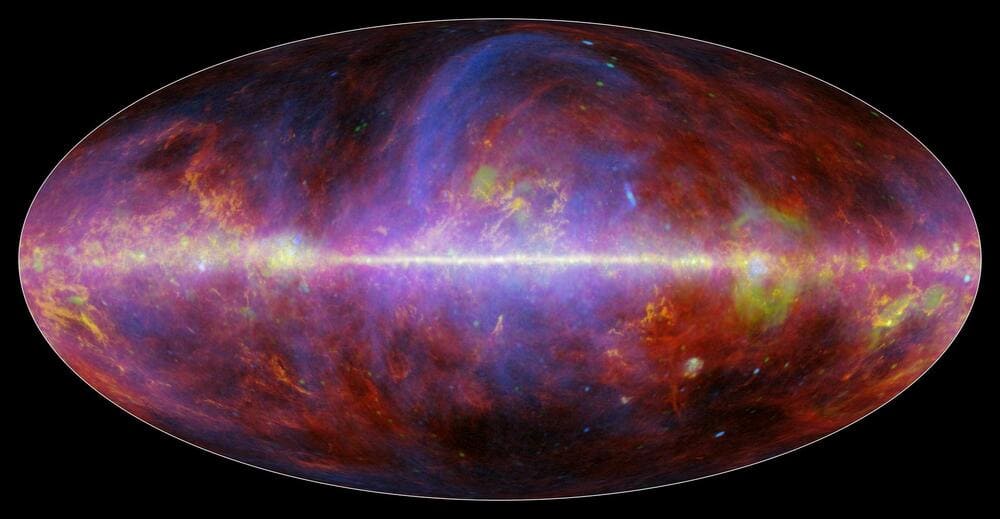The Cosmic Microwave Background (CMB) represents one of the most compelling pieces of evidence supporting the Big Bang Theory. As a relic radiation from the early universe, the CMB provides a snapshot of the universe when it was merely 380,000 years old. This article delves into the intricate details of the CMB, examining its significance, how it supports the Big Bang Theory, and the various scientific endeavors that have expanded our understanding of this primordial light.
Understanding the Cosmic Microwave Background
The CMB Radiation is essentially the afterglow of the Big Bang. When the universe was in its infancy, it was a hot, dense plasma of particles. As the universe expanded and cooled, these particles combined to form neutral atoms, allowing photons to travel freely. This transition is known as “recombination,” and the resulting radiation has been traveling through space ever since, cooling as the universe expands.
Historical discovery of the CMB
The discovery of the CMB was a serendipitous event. In 1965, Arno Penzias and Robert Wilson detected a faint microwave signal with their radio antenna, which they initially thought was due to technical issues or pigeon droppings. However, it turned out to be the background radiation predicted by earlier theorists. This discovery earned them the Nobel Prize in Physics in 1978 and provided strong evidence for the Big Bang Theory.
Significance of the CMB
The Cosmic Microwave Background Radiation (CMBR) is crucial because it serves as a cosmic blueprint, offering insights into the early universe’s conditions and the fundamental processes that shaped its evolution. The CMB’s uniformity and slight temperature fluctuations, or anisotropies, reveal information about the universe’s initial state and subsequent development.
Temperature fluctuations and anisotropies
One of the most significant aspects of the CMB is its temperature fluctuations. These tiny variations, measured to be about one part in 100,000, are crucial for understanding the universe’s large-scale structure. They indicate regions of slightly different densities, which eventually led to the formation of galaxies and other cosmic structures.
Inflationary epoch and quantum fluctuations
The inflationary epoch, a rapid expansion period shortly after the Big Bang, amplified quantum fluctuations in the early universe. These fluctuations are believed to be the seeds of the anisotropies observed in the CMB. By studying these variations, scientists can infer details about the inflationary period and the conditions that prevailed during the universe’s birth.
Mapping the CMB
Several missions have been dedicated to mapping the CMB with increasing precision. The COBE (Cosmic Background Explorer) was the first satellite to provide a detailed map of the CMB. Following COBE, the WMAP (Wilkinson Microwave Anisotropy Probe) offered a more precise measurement, and the Planck Satellite has provided the most detailed map to date, allowing scientists to test various cosmological models.
Implications for cosmology
The data obtained from CMB observations have profound implications for cosmology. It helps refine models of the universe’s composition, including the proportions of dark matter, dark energy, and ordinary matter. The CMB also provides constraints on the universe’s age, its rate of expansion (Hubble constant), and its overall geometry.
CMB and the observable universe
The observable universe is a term that describes the portion of the universe from which we can receive information. The CMB represents the edge of this observable universe, a boundary beyond which we cannot see directly because the universe was opaque before recombination.
Current research and future prospects
Current research on the CMB focuses on increasing the precision of measurements and analyzing data to uncover more details about the early universe. Future missions and technological advancements promise to provide even more insights. Scientists aim to explore phenomena such as dark matter interactions, the nature of dark energy, and the potential for discovering new physics beyond the standard cosmological model.
The Cosmic Microwave Background stands as a pillar of modern cosmology, offering compelling evidence for the Big Bang Theory. Through meticulous observation and analysis, it continues to provide profound insights into the universe’s origin, composition, and evolution. As technology advances, our understanding of this primordial radiation will only deepen, revealing more secrets about the cosmos and our place within it.


